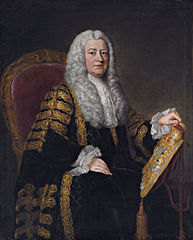
This Act came into force on 25 March 1754 and was popularly known as Lord Hardwicke’s Marriage Act.
It was the first law passed by Parliament regarding marriage, and was an attempt to stop clandestine marriages. Prior to the Act all regulations were decided by canon law (church law), and little effort was made to ensure marriages took place properly.
For a marriage to be legal it had to take place in an Anglican church, either by proclaiming the banns for three consecutive Sunday’s beforehand, or under licence, where you would pay a fee to get married quicker than by banns.

The Act enhanced the recording of marriages considerably. Firstly, it enforced a separate marriage register, and specified that it should be made of ‘vellum or durable paper’. It should have a printed form, providing lines and headings to ensure more precise record keeping. Entries in it were to include the witnesses, signatures of all parties, the occupation of groom and the residences of the couple marrying.
The Act required parental consent for marriage under licence, as well as the announcing of the banns, for marriages involving anyone under the age of 21.
Jews and Quakers were exempt from this Act.
Effect of the Act
In practice the Act was not a great success. Couples wanting to get married without parental consent got around it by having their wedding ceremony in a different parish, thus stopping parents from finding out through the reading of the banns. The Act also provided no legal recourse after marriage had taken place for it to be voided.
